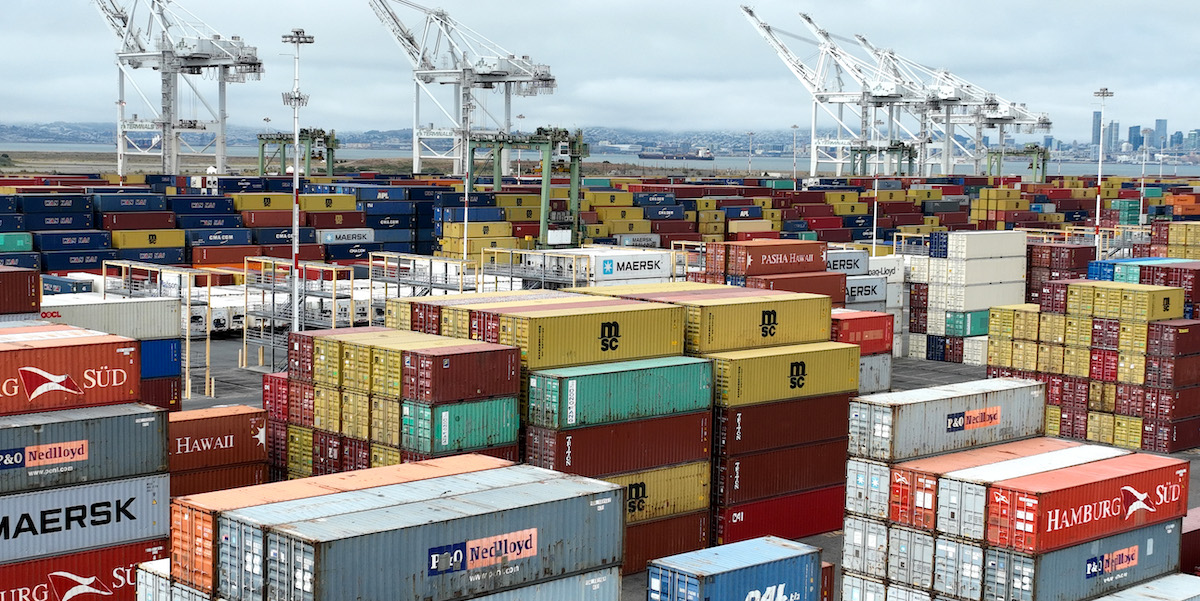For months, unused containers have been accumulating in Chinese ports, i.e. the huge metal boxes that are used to ship anything, especially by ship. Port managers no longer know where to put them. It is a paradoxical situation, because the lack of containers had been one of the most well-known problems of the world trade crisis, one of the most serious economic consequences of the pandemic. Among other things, the crisis had led to a series of huge delays and blockages in shipments and had made many goods and raw materials unobtainable, causing their prices to rise significantly. The problem of the shortage of containers was felt above all in the ports of China, from which it had become very expensive to ship.
Since then, things have changed a lot: the pandemic is over, international trade has greatly reduced its pace, shipping costs have returned to normal and the world trade crisis has more or less resolved itself: one of the effects of all this was that most of the containers produced in the pandemic are no longer needed.
More than 80 percent of the volume of goods transported around the world travels on cargo ships, those that carry containers. This means that almost all the goods we buy (or the materials from which they were produced) have at some point in the journey been transported in a container on a cargo ship. Transport by sea is in fact the most convenient for moving large volumes of non-perishable goods over long distances (while air transport, which is faster, is often preferable for perishable goods). In the ports where they arrive, the containers are loaded onto trucks or trains to complete their journey: a logistic method called intermodal transport and based on the standardization of containers at an international level, which allows them to be moved easily from one vehicle to another in order to make the process as fast as possible.
Intermodal transport is a relatively recent innovation: it has existed for less than seventy years and has been one of the factors that have allowed the phenomenon of globalisation, ie the integration of the various regional economies into a single global economy.
The jamming of this system had had consequences along the entire production chain and had started with the first lockdowns: given the global collapse in the production and export of goods during the first wave of the pandemic, transport companies had canceled hundreds of trips. This had disrupted the normal flow of empty containers, which had not returned to their most needed destinations.
In particular, those that had transported goods from China to the United States remained in US warehouses, often located far from ports due to space constraints. The United States imports far more goods from China than it exports, and therefore there is a flow of full containers that tends to go from China to the United States, and a flow of empty containers that tends to go the other way. When Chinese production had resumed and the demand for the transport of goods had begun to recover – and it had done so quickly – several Chinese ports found themselves without enough containers.
In that emergency situation, ports and shipping companies had made huge investments and stockpiled containers to try and increase their shipping capacity. In 2021, the global production had reached the 7 million standard-size containers, more than double the production in 2020. Container production had increased rapidly in response to a pandemic-induced increase in demand for physical goods: then a large part of consumption was directed towards products, and not towards all those services closed due to social restrictions, such as those provided by restaurants and hotels.
Since the restrictions were eased, part of consumption has gone back to services which have gradually reopened, thus reducing the demand for physical goods. The shipping industry has therefore found itself with the opposite problem: an excess of containers that is creating problems in ports in China, a country where almost all of the world‘s containers are produced.
According to Financial Times the production of the most common and standard containers (those 12 meters long) decreased by 71 percent: from over one million units in the first quarter of 2022 to just over 300,000 in the first three months of this year. Falling demand has also hit container producers hard. The profits of China International Marine Containersone of the country’s largest producers, fell 91 percent year on year in the first three months of this year.
